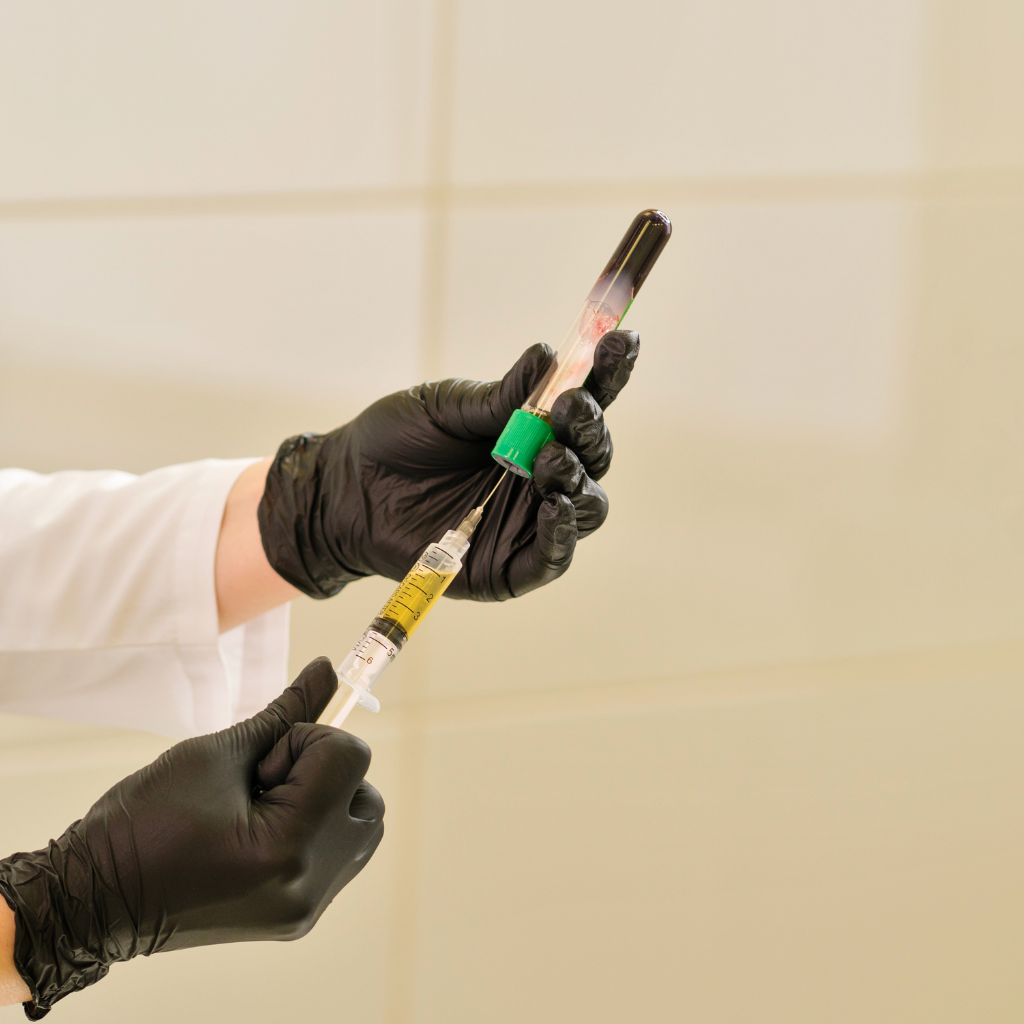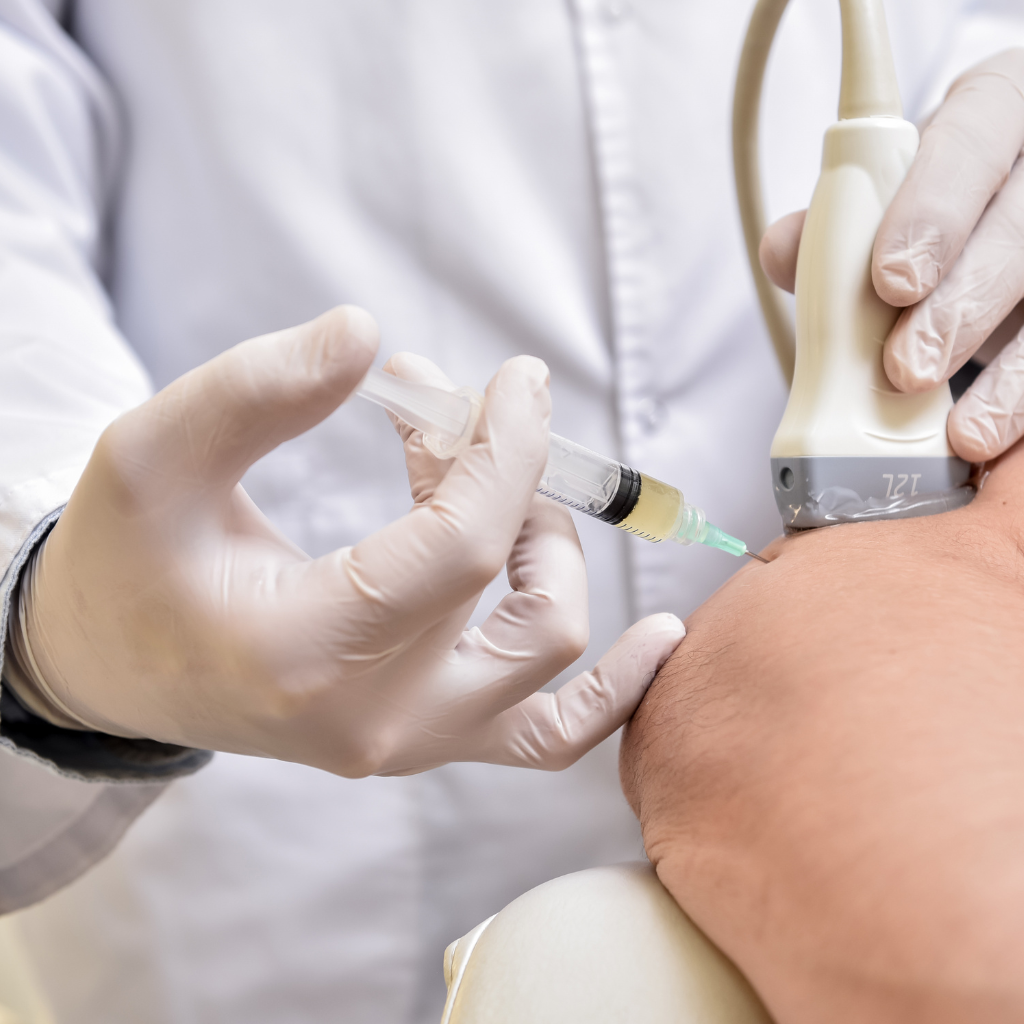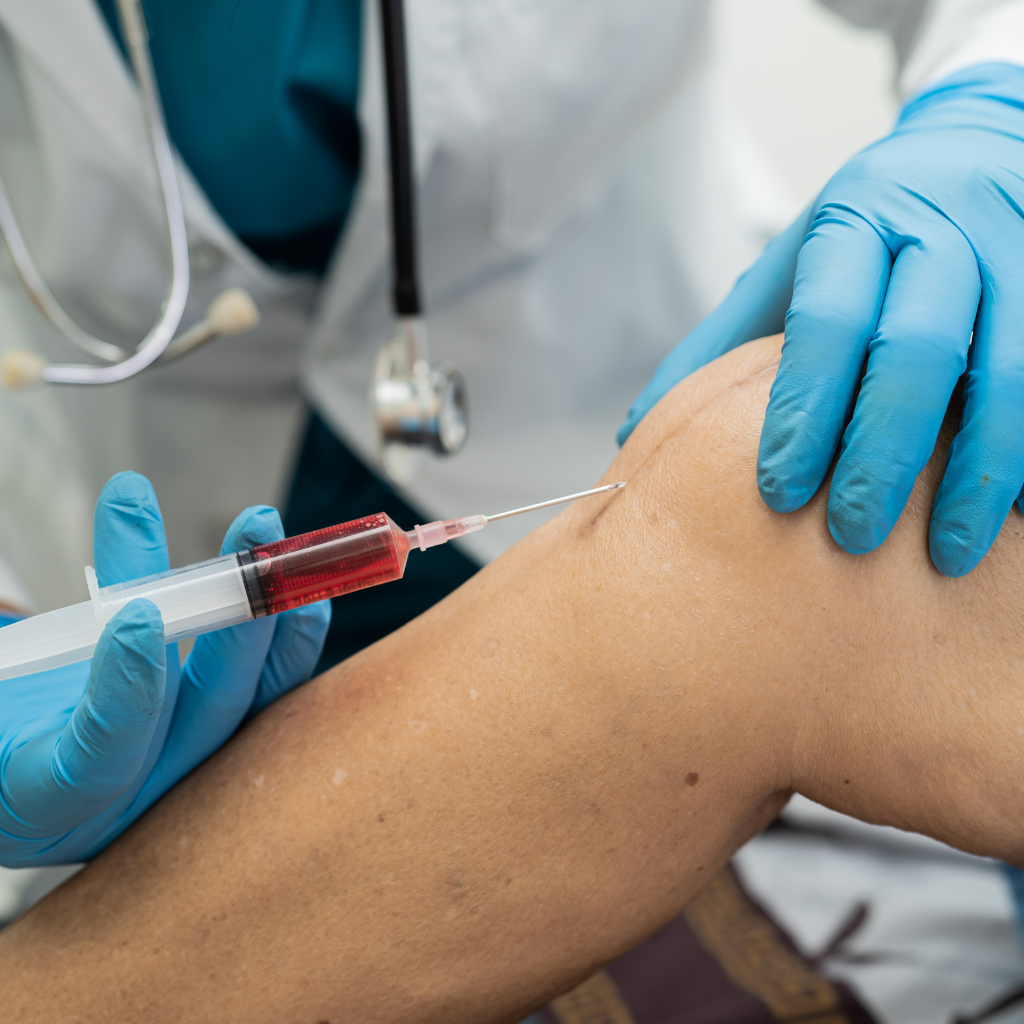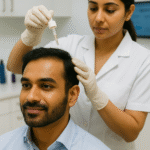Platelet-Rich Fibrin (PRF) Vs Platelet-Rich Plasma (PRP): What’s the Difference?
- Home
- Hair Re-Growth
- platelet rich fibrin vs platelet rich plasma

Platelet-rich fibrin (PRF) and platelet-rich plasma (PRP) differ in composition, preparation, and therapeutic efficacy. PRF has a fibrin matrix enabling gradual growth factor release and is prepared without anticoagulants, whereas PRP offers immediate release with a higher platelet concentration, prepared using anticoagulants. PRF supports prolonged tissue regeneration, advantageous for chronic wounds, while PRP provides rapid rejuvenation in acute scenarios. Their application is determined by the desired treatment outcome and specific clinical needs, offering intriguing insights upon further exploration.
Key Takeaways
- PRF contains a fibrin matrix, while PRP does not, impacting their structural and therapeutic properties.
- PRF is prepared without anticoagulants, whereas PRP requires anticoagulants during preparation.
- PRF offers gradual growth factor release, beneficial for sustained tissue regeneration.
- PRP provides an immediate release of growth factors, suitable for rapid healing scenarios.
- PRF is optimal for chronic wounds, while PRP is effective for acute treatment applications.
What Is the Main Difference Between PRF and PRP?
The primary distinction between platelet-rich fibrin (PRF) and platelet-rich plasma (PRP) lies in their composition and preparation methods, which considerably influence their clinical applications.
PRF is characterised by a fibrin matrix that facilitates a gradual release of growth factors, enhancing wound healing and tissue regeneration over an extended period.
In contrast, PRP lacks this fibrin structure, resulting in a more immediate but shorter-lived release of bioactive molecules, impacting its therapeutic efficacy differently.
How does platelet-rich fibrin differ from platelet-rich plasma?
In what fundamental ways does platelet-rich fibrin (PRF) set itself apart from platelet-rich plasma (PRP)? The primary distinction lies in their composition and release mechanisms.
Platelet-rich plasma vs platelet-rich fibrin reveals that PRF forms a fibrin matrix, creating a three-dimensional fibrin clot that facilitates the gradual release of growth factors, enhancing tissue regeneration over time. In contrast, platelet-rich plasma lacks this matrix, resulting in a more immediate release of growth factors.
PRF also inherently possesses a higher platelet concentration without anticoagulants, permitting a sustained release profile. This difference in growth factor release timelines and structural composition between PRF vs PRP underscores PRF’s potential in regenerative medicine, offering a prolonged therapeutic effect compared to the quicker, yet transient, action of PRP.
What are the core differences between platelet-rich fibrin and platelet-rich plasma injections?
Although platelet-rich fibrin (PRF) and platelet-rich plasma (PRP) injections are both employed in regenerative therapies, they exhibit distinct core differences primarily in their preparation and therapeutic effects.
PRF is created without anticoagulants, resulting in a fibrin matrix that gradually releases growth factors, enhancing tissue healing. In contrast, PRP is prepared with anticoagulants, maintaining a liquid form with a higher concentration of platelets and immediate growth factor release, suitable for acute regenerative treatment.
The fibrin matrix in PRF provides a scaffold for cell migration and sustained therapeutic effects, while PRP’s platelet concentrate offers a rapid but short-lived regenerative boost.
Understanding these differences between PRP and PRF is essential for tailoring regenerative treatments to specific clinical needs and optimising patient outcomes.
How does the fibrin matrix impact PRF treatments vs PRP therapy?
Examining the role of the fibrin matrix reveals significant insights into the effectiveness of PRF treatments compared to PRP therapy.
The primary distinction lies in the presence of a spongy fibrin matrix in platelet-rich fibrin, absent in platelet-rich plasma. This matrix provides a scaffold that enhances the sustained release of growth factors, promoting superior tissue regeneration.
PRF treatments capitalise on this framework, allowing platelets to be released gradually, thereby extending the healing process. In contrast, PRP therapy, lacking this fibrin structure, delivers an immediate but transient release of growth factors due to its liquid plasma composition.
Consequently, PRF is particularly advantageous in clinical scenarios where prolonged growth factor availability is critical to effective tissue regeneration and healing.
How Do Platelet-Rich Plasma and Platelet-Rich Fibrin Work?
Platelet-rich fibrin (PRF) facilitates stem cell activation by releasing growth factors that promote tissue regeneration and healing at the site of application.
In contrast, platelet-rich plasma (PRP) is effective in therapy due to its high concentration of platelets, which secrete cytokines and growth factors that enhance the healing process.
Both PRF and PRP exploit the regenerative potential of stem cells, but PRF’s fibrin matrix provides a sustained release of these bioactive molecules, offering a distinct advantage in clinical applications.
How does PRF work in stem cell activation?
Understanding the mechanisms behind Platelet-Rich Fibrin (PRF) reveals its significant role in stem cell activation.
PRF works by providing a scaffold-like structure known as the platelet-rich fibrin matrix, which supports the proliferation and differentiation of stem cells.
Unlike platelet-rich plasma, PRF contains a higher concentration of growth factors like transforming growth factor-beta (TGF-β) and vascular endothelial growth factor (VEGF).
These growth factors are integral in promoting the healing and regenerative processes.
The potential of PRF therapy lies in its ability to enhance tissue regeneration by releasing these growth factors over a prolonged period.
Different types of PRF treatment, such as L-PRF, A-PRF, i-PRF, and T-PRF, offer specific advantages depending on the clinical need, with some forms designed for immediate application and others for deeper, long-lasting regenerative effects.

What makes platelet rich plasma effective in PRP therapy?
The efficacy of platelet-rich plasma (PRP) therapy is attributed to its high concentration of autologous platelets, which play a pivotal role in tissue repair and regeneration.
PRP works by harnessing growth factors such as platelet-derived growth factor (PDGF), transforming growth factor-beta (TGF-β), and vascular endothelial growth factor (VEGF). These factors promote cellular proliferation, angiogenesis, and extracellular matrix formation, enhancing the effectiveness of PRP treatments.
When PRP gets activated, it releases these bioactive proteins, initiating the healing cascade. The application of platelet-rich plasma in clinical settings has shown benefits of PRP, including accelerated wound healing and reduced inflammation.
Autologous platelet-rich plasma is particularly advantageous as it minimises immune rejection and enhances biocompatibility, making PRP therapy a reliable regenerative medicine approach.
How are stem cells used in PRF and PRP treatments?
Although both platelet-rich plasma (PRP) and platelet-rich fibrin (PRF) utilise the regenerative potential of blood-derived components, their roles in conjunction with stem cells differ considerably.
PRP and PRF treatments harness growth factors that enhance stem cell proliferation and differentiation. The platelet rich fibrin preparation vs platelet rich plasma involves differing centrifugation processes, influencing their biological properties.
PRF involves a slower centrifugation, resulting in a fibrin matrix that sustains gradual release of growth factors, potentially enhancing stem cell activity over time. Conversely, PRP provides a more immediate release of growth factors.
When choosing between PRP and PRF, the potential of platelet-rich fibrin to foster a conducive environment for stem cell integration may offer distinct advantages in tissue regeneration applications.
PRP and PRF offer complementary regenerative strategies.
What Are the Benefits of PRP and PRF in Regenerative Therapy?
In regenerative therapy, the use of PRP is primarily valued for its ability to stimulate collagen production and enhance hair follicle health, offering significant benefits in facial rejuvenation and hair restoration treatments. The effect of platelet-rich plasma is often immediate, making it a popular choice for patients seeking quick aesthetic improvements and looking to improve scalp health.
Conversely, injectable platelet-rich fibrin (i-PRF) demonstrates superior healing properties due to its fibrin matrix, which facilitates the sustained release of growth factors. This makes PRF over PRP a preferred option in treatments aiming for longer-lasting results in tissue regeneration.
Although similar to PRP in preparation and application, PRF’s structure allows for extended growth factor activity, resulting in more consistent regenerative outcomes over time. Comparative analyses indicate that while PRP, due to its rapid action, is effective for immediate rejuvenation, PRF may provide more durable and natural results in tissue healing and cellular repair.
What are the main benefits of PRP in facial and hair treatments?
Even though Platelet-Rich Plasma (PRP) therapy has gained substantial attention in aesthetic medicine, its specific benefits in facial and hair treatments are grounded in well-documented regenerative mechanisms.
PRP and PRF treatments utilise a patient’s blood, processed to concentrate platelets, which are abundant in growth factors. In the field of hair restoration, PRP injections have demonstrated the capability of stimulating follicular proliferation and enhancing hair density. PRF treatment for hair further builds on this by offering potentially enhanced results with its higher concentration of regenerative factors.
The efficiency of PRP as a treatment option for skin rejuvenation lies in its ability to enhance collagen production and improve skin texture. PRP alone, derived from a minimal amount of blood, delivers plasma rich in growth factors, optimising tissue repair and regeneration.
Consequently, PRP remains a highly regarded modality in aesthetic interventions.
What are the healing benefits of PRF therapy over PRP?
While both Platelet-Rich Plasma (PRP) and Platelet-Rich Fibrin (PRF) therapies utilise autologous blood-derived products to promote healing, PRF is often considered superior in regenerative applications due to its unique formulation and sustained release of growth factors.
The difference between platelet-rich plasma and injectable platelet-rich fibrin lies in PRF’s fibrin matrix, which allows a more gradual release of cytokines and growth factors, enhancing tissue regeneration.
- Enhanced Tissue Regeneration: PRF’s fibrin structure supports a longer release of healing agents.
- Reduced Inflammatory Response: Lower leukocyte levels in PRF minimise inflammation.
- Improved Healing Benefits: PRF maximises wound healing processes.
- Sustained Growth Factor Release: PRF releases growth factors over time, unlike PRP.
- Choosing Between PRP and PRF: PRF may be more advantageous for chronic wound management.
How do the benefits of PRP and PRF compare in results?
Although both Platelet-Rich Plasma (PRP) and Platelet-Rich Fibrin (PRF) therapies are employed in regenerative medicine for their ability to harness autologous growth factors, their comparative benefits yield distinct clinical outcomes.
PRP, known for its liquid preparation, facilitates ease of injection and rapid release of growth factors, promoting accelerated tissue repair and anti-inflammatory effects.
In contrast, the use of PRF offers a fibrin matrix that gradually releases growth factors, fostering sustained healing and tissue regeneration.
When comparing PRF and PRP, PRF’s injectable platelet-rich fibrin provides a scaffold for cell migration, enhancing wound healing.
The PRP vs PRF debate centers on application specificity; PRP’s adaptability contrasts with PRF’s prolonged efficacy, each serving unique therapeutic roles in clinical practice.
How Are PRF and PRP Prepared and Applied in Treatments?
Platelet-rich plasma (PRP) is prepared through a centrifugation process that isolates growth factor-rich platelets from red blood cells (PRP from RBCs), enhancing their concentration for cosmetic injections. This process also separates poor plasma protein, which is typically discarded, allowing a more targeted use of platelets to improve the efficiency of the platelet rich plasma in the treatment.
In contrast, injectable platelet-rich fibrin (i-PRF) is prepared by a similar method to PRP, but without anticoagulants. This results in a fibrin matrix that gradually releases growth factors, offering a more sustained regenerative response.
The application techniques of PRF and PRP differ, with PRF often yielding more prolonged regenerative outcomes due to its natural fibrin scaffold. At the same time, PRP is typically used when more immediate but shorter-term—term—effects are desired.

How is platelet-rich plasma prepared for cosmetic injections?
To prepare platelet-rich plasma (PRP) for cosmetic injections, a meticulous multi-step process is undertaken, ensuring peak concentration of growth factors for therapeutic efficacy.
Initially, a blood sample is drawn and placed in a centrifuge. This device spins the sample, causing stratification into layers: red blood cells (RBCs), platelet-poor plasma, and platelet-rich plasma (PRP). The PRP is carefully extracted, isolating the platelets and plasma from RBCs.
- Blood collection: A volume of venous blood is obtained.
- Centrifugation: The sample undergoes spinning in a centrifuge, separating components by density.
- Layer separation: Plasma layers are distinct, with PRP above RBCs.
- Extraction: Pure platelet-rich plasma is drawn from the separated sample.
- Concentration adjustment: PRP may be further refined for prime cosmetic application.
What steps are followed to prepare platelet-rich fibrin?
The preparation of platelet-rich fibrin (PRF) involves a streamlined process distinct from that of platelet-rich plasma. PRF is processed by centrifuging whole blood without anticoagulants, forming a second-generation platelet concentrate.
Unlike PRP, the synthesis of PRF results in a spongy fibrin matrix that traps platelets, leukocytes, and growth factors within its structure. This matrix acts as a natural concentrate fibrin glue, enhancing tissue regeneration.
The primary difference between platelet-rich plasma and platelet-rich fibrin lies in the absence of additives in PRF processing, allowing for a more natural and bioactive product. This makes PRF a preferable choice in some clinical settings, as it offers a sustained release of growth factors and a scaffold for cellular migration and proliferation.
How do PRF and PRP injections differ in technique and results?
How do the preparation and application techniques of PRF and PRP diverge, and what implications do these differences have on clinical outcomes?
Platelet-rich fibrin (PRF) is prepared using a low-speed centrifuge, resulting in a fibrin matrix that enhances cellular migration and healing. In contrast, platelet-rich plasma (PRP) involves a higher-speed centrifugation, which isolates platelets without a fibrin scaffold.
This divergence in preparation influences clinical outcomes markedly.
- PRF for hair restoration: Promotes slower release of growth factors.
- PRP may lead to a rapid but short-lived effect due to its lack of fibrin.
- Use of platelet-rich fibrin: In wound healing, it supports tissue regeneration.
- PRF and PRP, when combined, offer synergistic benefits.
- Compared to PRP alone: PRF provides sustained biological activity.
These differences dictate the specific therapeutic applications of PRP or PRF.
Which Treatment Is Right: Comparing PRF and PRP Effectiveness?
In evaluating the effectiveness of PRF versus PRP in aesthetic procedures, it is essential to analyse their distinct mechanisms of action, such as the sustained release of growth factors in PRF versus the immediate release in PRP. Notably, platelet-rich plasma peptides offer rapid but short-lived regenerative effects, while PRF provides a more prolonged and natural healing response.
First introduced, PRF was developed to enhance the limitations observed in earlier platelet therapies by eliminating additives and anticoagulants. Its fibrin matrix supports gradual growth factor delivery, making it especially useful in procedures where extended healing is desired.
Factors influencing the choice between PRF and PRP for healing include the specific clinical objectives, patient health conditions, and expected recovery timelines. In some cases, PRF may be combined with PRP to optimise both immediate and long-term regenerative effects.
Ultimately, therapies without platelet-rich fibrin may lack the sustained stimulation needed for certain aesthetic goals, highlighting the importance of treatment personalisation.
How do PRF and PRP work differently in aesthetic procedures?
While both Platelet-Rich Fibrin (PRF) and Platelet-Rich Plasma (PRP) are derived from the patient’s blood, their mechanisms of action in aesthetic procedures exhibit distinct characteristics.
PRF, due to its fibrin matrix, guarantees a slow release of growth factors and peptides, enhancing tissue regeneration. In contrast, PRP is rich in plasma adhesion molecules, which facilitate rapid but transient delivery of growth factors.
PRF’s inclusion of white blood cells offers additional immune support, bolstering healing processes. Conversely, PRP’s liquid consistency allows for easier application in delicate areas.
The fibrin structure in PRF serves as a scaffold for cellular proliferation, while PRP’s composition focuses on immediate rejuvenation.
- Fibrin matrix for sustained release
- Rapid growth factor delivery in PRP
- White blood cells in PRF for immune support
- Plasma adhesion molecules in PRP
- Scaffold structure in PRF
What factors influence choosing PRF vs PRP for healing?
The choice between Platelet-Rich Fibrin (PRF) and Platelet-Rich Plasma (PRP) for healing is influenced by several critical factors, each rooted in their unique biochemical compositions and physiological effects.
PRF, with its fibrin matrix, provides a sustained release of growth factors, which enhances wound healing and tissue regeneration over time. In contrast, PRP offers an immediate but shorter-lived burst of growth factors, making it suitable for acute healing scenarios.
The concentration of blood cells in PRF is higher, promoting better hemostasis and cellular migration. Treatment selection may also depend on the clinician’s preference and targeted healing outcomes, as PRF is often favoured for prolonged regenerative effects. At the same time, PRP is chosen for tasks requiring rapid intervention and enhanced initial healing.
How does comparing PRF and PRP help in treatment planning?
When determining the ideal treatment strategy, clinicians benefit from a comparative analysis of Platelet-Rich Fibrin (PRF) and Platelet-Rich Plasma (PRP), as it elucidates their respective therapeutic efficacies.
PRF and PRP differ fundamentally in their composition; PRF includes a fibrin matrix, while PRP contains concentrated plasma and peptides. This comparison aids in understanding treatment outcomes, such as healing time and tissue regeneration.
Clinicians must consider the presence of red blood cells in PRF, which can enhance healing through sustained release of growth factors.
- PRF’s matrix structure enhances wound healing by providing a scaffold.
- PRP’s high plasma concentration offers rapid release of growth factors.
- Red blood cells in PRF contribute to sustained therapeutic effects.
- Peptides in PRP accelerate tissue repair.
- Fibrin in PRF supports cellular migration and proliferation.
Conclusion
In summary, both platelet-rich fibrin (PRF) and platelet-rich plasma (PRP) offer distinct advantages in regenerative therapy due to their unique preparation and biological properties. PRF, with its fibrin matrix, allows for sustained release of growth factors, enhancing tissue regeneration. Conversely, PRP’s higher platelet concentration provides a more immediate regenerative response. Selection between PRF and PRP should be based on specific clinical objectives, evidence-based outcomes, and patient-specific factors, ensuring maximum therapeutic efficacy and tailored treatment strategies.

Highly skilled cosmetologist at Tune Clinical Aesthetics, specializing in advanced skin and hair treatments.





